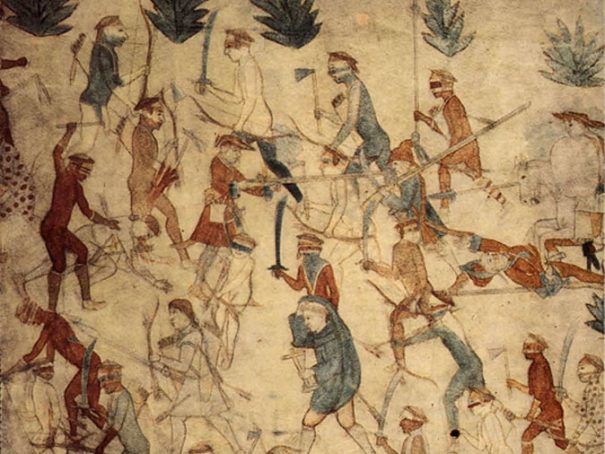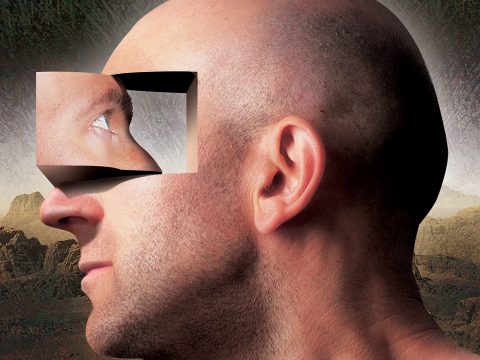Anthropology

What is Self-knowledge?
4 enero, 2018Gnostic Anthropology
We know that Anthropology is the science that integrally studies the human being: his origin, development, physical features, evolution and culture.
In the era of massive technological development, when space frontiers are permanently expanding further, when orbital telescopes allow us to detect around 3600 exoplanets and the Curiosity Rover is boring through the Martian soil, our sight is set upon the search of our origins. Nowadays technological devices are challenging time, allowing us to transcend temporal barriers and transport to ancient times, something unthought of some decades ago. Let’s analyze some examples:
The great Maya aquifer, the greatest submarine cavern in the world, has been explored during January 2018 in the Yucatan peninsula (with 248 cenotes and 347 kilometers of passages). Researchers have discovered remains of extinct fauna dating from 2.6 million years ago and a Mayan center of ceremonial journeys/activities with 198 archaeological contexts, which will broaden the knowledge that we have about this civilization.
On the 1st January 2018, Guatemala’s government announced that in the leafy mantle of the Maya biosphere Reserve, a group of scientists discovered around 60.000 ruins of the Mayan empire, which would solve various enigmas about the extinct culture. Exact measures were made, using a new technology known as Lidar -Light Detection and Ranging- which scans the earth surface through optical laser remote sensing, deleting the green mantle of the jungle and making visible the occult structures.
In Jebel Irhoud, Morocco, there were found the most ancient remains of the homo sapiens. That would mean that the origin of nowadays humanity dates from 100 thousand years earlier than it was thought. The anthropologists who made the discovery confirm that the recently found fossils date from around 315 thousand years ago, while the remains known up to now -known as “homo rhodesiensis” or “homo heidelbergensis”- are from 200 thousand years ago. The Moroccan specimens were found between 2007 and 2011 and apart from some tools, there are skulls, a mandible and teeth among them.
One of the skulls found in Jebel Irhoud.
Advances in genetics teach us that the Homo Sapiens and Neanderthals were not the two isolated species that we thought they were, because they repeatedly engendered fertile progenies around 55.000 years ago. That is why if you are reading these lines and you are not an African descendant, you carry within yourself some drops of Neanderthal DNA. Apart from that, the genetic analysis of fossil remains found in Siberia and the one of our ancestors are also related to Dinosaurs, who were not even thought to exist up to some years ago. They lived over the Earth 50.000 years ago and their DNA is still present in Australians and people living in South Asia. Moreover, now a group of Spanish and Indian scientists have published proofs about a third interchange of genes and fluids with another ancestor, whose trails seem to be present in the Andaman islanders’ DNA, in India.
These examples previously cited invite us to reflect: What is the real origin of humanity? Did it exist at a central point from where culture emanated towards the rest of the planet? Have there existed high refined civilizations in the past, beyond our historical schemata and almost perfectly detailed in all schoolrooms of our world?
Facing all these questions, some elusive answers arise, as well as some mythological and erring names such as Atlantis and Lemuria; archaeological discoveries from other eras known as (oopart acronym of) Out of Place Artifacts; contains many incomplete and vague pieces of data which official anthropology doesn’t know and does not want (which is the most preoccupying thing) to assemble together.
Gnostic esoteric Anthropology analyzes humanity, its origin and culture from another point of view, considering that this planet and its marvelous biodiversity have as its main goal the spiritual development of humanity. For this science, we are not a body with a soul, but a soul coated with matter.
Gnostic Anthropology is eminently psychoanalytical because it offers conclusions about any remote past remains; in its different cultural expressions such as painting, architecture, sculpture, etc. The gnostic student makes a psychological analysis of the eternal principles that the artists transmitted in order to enhance his lifestyle.
This Anthropology is also present in principles and laws from spiritual and universal currents such as the Rosicrucianism and Theosophy and pretends that each student is able to develop the innate abilities he has and which are unfortunately atrophied. Spiritual sensibility and faculties which transcend physical senses allow us to ascertain the real story of humanity.
For example, lets analyze the following: when the esoteric student observes the Great Giza Pyramid, he does not pretend to set its date of origin but to study the reasons for its construction; its relation to Urania, the Greek nymph of astronomy (the cosmos), and the connection it has with the human body.
We will point out some postulates for this Anthropology, which we will not be able to fully develop, given the reduced extension of this article:
- Every planet has had or will have life; they’re not mere ornamental objects that occupy space and mechanically twist around in the vast universe.
- Human shape, as we know it, in the final stage of spiritual evolution is universal. Movie studies which recreate the Elder Brethren of the Cosmos in monstrous shapes, invested with advanced technology and carrying out war activities, only project the unconscious intentions of our civilization if we arrived to another inhabited planet.
- Because of a cosmic law, in each planet, evolution is produced in seven groups of people in seven different parts of that world. That is defined as the Seven different Root-Races. Nowadays humanity corresponds to the fifth root-race over the Earth.
- In the same way that these races evolve from ether to matter, and from matter they return to a relative physical tenuity again, other so called organic living creatures, even plants, also change in each new root-race.
- The human beings antiquity is greater than what we are told; the third root-race, the Lemurians, have lived with dinosaurs.
- In this round, men preceded all mammals, even anthropoids in the animal kingdom.
- Each root-race disappears after a global catastrophe, which is a balancing process, not exclusively karmic.
All these postulates carry us towards an ancient past which can be analyzed in another article.
If you are interested in our studies, you need to know that Gnosis is a word from Greek origins which means experiential knowledge. Gnostic Institutions aim at the self-realization of the individual; that is to say the harmonious development of all the essential capacities of human beings, and the conquering of happiness. We invite you to learn more about it…




